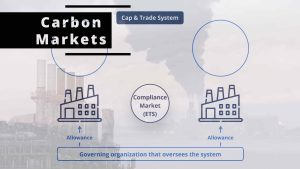Do Carbon Credit Exchanges Expire?
Carbon Credit Exchanges Expire
One of the fastest growing markets in the world today is carbon credits. These are financial instruments based on the reduction of carbon dioxide and other greenhouse gases in the atmosphere. They can be bought and sold on the global market in exchange for money. Many countries are implementing carbon pricing schemes to reduce their emissions. Some of these are carbon taxes, while others use a cap-and-trade system or similar trading framework.
These programs are largely driven by the Paris Agreement, which was signed by more than 180 nations and aims to limit global temperature increases to below 2 degrees Celsius. As of 2022, there are 68 carbon pricing schemes around the world. This includes international initiatives such as the Clean Development Mechanism and Article 6 of the Paris Agreement, as well as national schemes such as the European Union Emissions Trading System (EU-ETS) and California’s Cap and Trade Program.

There are two major classes of carbon credit exchange: compliance and voluntary. Compliance carbon credits are created under mandatory systems of national or regional environmental regulations, and must be traded through approved carbon markets. Voluntary carbon offsets are created in independent markets, and can be purchased by companies who don’t intend to use them for regulatory compliance purposes.
Do Carbon Credit Exchanges Expire?
A credit is a verified, traceable unit of emission reduction that can be sold and used to comply with the Kyoto Protocol or other similar climate change agreements. The price of carbon credits on the global market fluctuates based on the cost of energy, demand for green products, and political events.
While the global carbon credits market is large, it’s important to understand that this is a risky and volatile investment. The price of carbon has spiked in the past, and the volatility is expected to continue as more and more companies are required to reduce their carbon footprint.
The vast majority of carbon credits are generated through large-scale projects that reduce or remove carbon from the atmosphere. These projects are usually developed by NGOs or governments and must meet strict standards to be certified as a carbon credit. Often, they are based on land-use changes such as forestry or biofuels. Some projects are permanent, while others are temporary and only last for a few years.
Because of these issues, investors should research the project they are considering buying or selling to ensure it is legitimate and that its intended effect on the environment will be achieved. They should also look for reputable registries, like IHS Markit and APX Registry, that serialize each carbon credit and strictly control the chain of custody from the originator to the broker or distributor and then to the end-user.
Some of these registries are even moving into the blockchain space, offering a digital exchange that uses DLT to allow buyers and sellers to trade liquid, standardized contracts in real-time. This can be a valuable tool for institutional investors, stockbrokers, and companies that are working on carbon projects.